
- Home
- Travel Packages
- Top Destination
-
Travel Attraction
By Category
Top Attraction

- Travel Agents
- Car Rentals
- Hotels
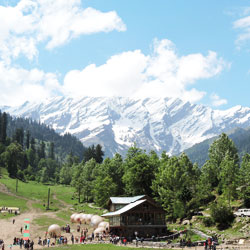
Solang Valley is a must visit tourist destination on your trip to Manali. The valley bestows splendid view of the snow draped peaks and suave glaciers. Solang Valley is located in the north western region of Manali, and is much acclaimed as the 'Snow Point'. The valley boasts of a magnificent temple devoted to the Hindu diety, Anjana Mahadeva, which witnesses the formation of ice shivling during winters. The trek to this temple in winters is so fabulous and mystical. The mountaineering institute in Manali offers ski lift for all enthusiasts, and it also houses a guest house and a hut. Adventures in Solang:- The valley has to its credit exciting sports like paragliding, parachuting, zorbing and skiing. The wild earth adventures involves night marching amid the guiding canopy of stars, making it an unforgettable experience. Paragliding: Paragliding is usually hosted during summer, and is a sport that can be tried by both, the novice and experienced. This is because it is fully done under the training of expert guides. Solang Valley provides the tourists a gripping experience to flutter in the sky and relish in the beauty of its surroundings. Skiing: Skiing is a fun activity that can be played by experienced and fresher, alike. There are trainers who will guide you throughout skiing. Zorbing: Apart from being famous for paragliding and skiing, Manali hosts zorbing during summers. A zorb is actually a combination of plastic balls; the inner can accommodate around 3 passengers and is tightly connected by ropes for ensuring safety. These inflated balls are best suited for grassy slopes.
Explore More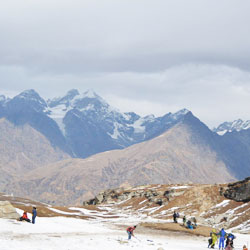
Rohtang Pass is a beautiful mountain pass situated on the eastern side of Himalayas. It links the Kullu Valley with Spiti and Lahaul Valleys of Himachal Pradesh. The pass hovers over the watershed between Beas and Chenab basins. On the extreme south of this pass, the Beas River flows southward and the Chandra River flows westward.Rohtang Pass is situated on a highway to Leh from Manali. The journey offers a spectacular and panoramic view of the lofty mountains. The pass is always open from the months of Jone to October annually. The best part about this pass is the scenic sight of glaciers, rivers and peaks. Marhi is an ideal haven for para gliders, as the wind here is mild and hardly changes all the time. The skyscraper tall peaks are usually draped in thick fog, and sometimes these mountains also witness cloudbursts. Rohtang Pass is always known for its unpredictable wind velocity and snowfalls. The place also has much in stock for the adventure freaks like mountain biking, skating and skiing. Be cautious as the density of oxygen starts lowering down at such altitudes. It is advised not to go all the way up if you suffer from chronic respiratory diseases like asthma and bronchitis.Most of the tourists who arrive at the pass prefer setting up tents by the roadside. Apart from camping facilities there are also plethora of river-side cottages, deluxe hotels, and luxury resorts. There is also the option of availing homestay that will allow you to relish in the beauty of nature and indulge in the culture of locals.
Explore More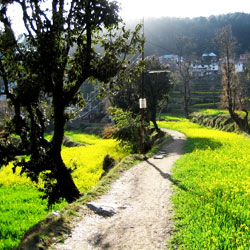
Just 11-km away from Dharamshala, located on the crest of a hill lies this attractive picnic spot, which presents a panoramic view of the Kangra valley, Dauladhar ranges and the Pong Dam. The village of Dharamkot once had a gallery of a well-known English painter A.W. Hallot. Today, its is a favourite picnic spot. Dharamkot is inhabited by the gaddies nestles amidst scenic beauty at 2100 metres above the sea level.Dharamkot also has the Vipassana meditation centre, Dhamma Shikara, as well as the Tushita Meditation Centre which is a centre for the study and practice of Buddhism in the Tibetan Mahayana tradition.
Explore More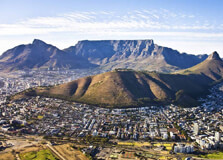
Table Mountain, one of the most iconic landmarks in South Africa, stands proudly over the city of Cape Town. With its flat-topped summit and steep cliffs, it is an instantly recognizable symbol of the city and has earned its place as one of the New7Wonders of Nature. Towering 1,085 meters (3,563 feet) above sea level, Table Mountain offers stunning panoramic views of the city, the surrounding beaches, and the ocean. It is a must-visit destination for tourists and locals alike, offering a unique combination of natural beauty, diverse flora and fauna, and rich history. Why is Table Mountain Famous? Table Mountain is famous for its breathtaking views and unique, flat-topped shape. The mountain has a rich geological history, formed around 600 million years ago during the formation of the Earth’s crust. Its summit, which resembles a large, flat table, has earned the mountain its name. Table Mountain is also known for its incredible biodiversity, being home to a vast number of plant species, some of which are found nowhere else on Earth. Aside from its natural beauty, Table Mountain is deeply ingrained in Cape Town’s history and culture. It serves as a focal point for the city and a prominent feature of the Cape Peninsula, drawing visitors from around the world who come to explore its hiking trails, ride the famous cableway, or simply enjoy the stunning views. It is also one of the world’s most photographed natural landmarks. How to Reach Table Mountain, Cape Town Table Mountain is located in the heart of Cape Town, easily accessible from the city center. Here are a few ways to reach this remarkable landmark: By Car If you are driving, Table Mountain is only a short distance from Cape Town's city center. The mountain is accessible via the Cableway Road, which leads to the lower cableway station. There is parking available at the lower station for visitors who are driving themselves. By Public Transport For those without a car, the MyCiTi bus service offers a convenient route to Table Mountain. The bus stops at the lower cable car station and is an affordable way to travel from the city to the mountain. You can also use taxis or ridesharing services like Uber, which are readily available in Cape Town. By Hiking For the more adventurous traveler, hiking to the summit of Table Mountain is a rewarding experience. There are several popular trails, including Platteklip Gorge, which is the most direct route to the top. Hikers can enjoy breathtaking views while challenging themselves with a steep ascent. However, this hike should only be attempted by those in good physical condition and with proper preparation. Weather at Table Mountain The weather on Table Mountain can be unpredictable, with frequent changes due to its unique location. The mountain is known for its “tablecloth” – a cloud formation that often blankets the summit, giving it the appearance of a tablecloth draped over the mountain. The weather can be quite different from the conditions in Cape Town itself, so visitors should always be prepared for temperature changes, especially in winter. Summers (December to February) are typically warm with temperatures ranging between 15°C to 25°C (59°F to 77°F). Winters (June to August) can be cooler, with temperatures ranging from 7°C to 15°C (45°F to 59°F). Rain is more common in the winter months, so it’s advisable to bring a jacket and be prepared for possible showers. Opening Hours and Timing Table Mountain is open year-round, but the Cableway operates with specific hours: Summer (October to March): 8:00 AM to 9:00 PM Winter (April to September): 8:00 AM to 6:00 PM The mountain's summit can be accessed during these times, but visitors should note that the Cableway may close temporarily due to weather conditions, especially in windy or stormy weather. Entry and Visit Details about Table Mountain To reach the summit of Table Mountain, visitors have two options: hiking or taking the Cableway. The Cableway is the most popular choice, offering a smooth and quick ride to the top. Tickets for the Cableway are available online or at the ticket office at the base of the mountain. Cableway Ticket Prices Adult (return): 360 ZAR Child (return): 180 ZAR Senior (return): 270 ZAR The prices vary for one-way tickets, with discounts available for South African residents. It is advisable to book tickets in advance during the high tourist season to avoid long queues. History and Architecture of Table Mountain Table Mountain has a long history that dates back millions of years. The mountain’s geological formation is attributed to ancient volcanic activity and erosion over time, creating its distinct flat top and steep cliffs. The mountain is made primarily of sandstone, with layers of granite forming the base. In the 19th century, the idea of creating a cableway to the summit was proposed, and in 1929, the first cableway system was built. It was later replaced in 1997 with the modern Table Mountain Aerial Cableway, which features rotating cabins that offer 360-degree views of the surroundings. Things to Do at Table Mountain Table Mountain offers a variety of activities for visitors to enjoy, including: 1. Cableway Ride The most popular activity at Table Mountain is taking the Cableway to the summit. The ride offers stunning views of Cape Town, the harbor, and the surrounding mountains. Visitors can enjoy the panoramic vistas from the top and take in the stunning beauty of the area. 2. Hiking For those who love adventure, hiking to the summit is a must. Popular trails like Platteklip Gorge and Skeleton Gorge offer challenging hikes that reward you with spectacular views of Cape Town from the top. 3. Scenic Views and Photography Table Mountain is one of the best places to take in the spectacular views of Cape Town, the coastline, and the nearby Robben Island. It is a great spot for photographers, with numerous viewpoints providing excellent opportunities to capture breathtaking photos. 4. Flora and Fauna The mountain is home to over 1,470 species of plants, many of which are endemic to the region. Visitors can explore the different ecosystems on the mountain, from fynbos vegetation to forests. It is also home to wildlife such as dassies (rock hyraxes), birds of prey, and various small mammals. Facts About Table Mountain Table Mountain is one of the oldest mountains in the world, estimated to be over 600 million years old. The mountain is a UNESCO World Heritage Site and a key part of the Cape Floristic Region. The “tablecloth” phenomenon occurs when cloud formations cover the summit, creating the iconic image of a table with a cloth over it. There are over 2,200 species of plants on Table Mountain, making it a biodiversity hotspot. Tips for Visiting Table Mountain Arrive Early: To avoid the crowds, try to visit early in the morning, especially during peak tourist seasons. Wear Comfortable Shoes: If you plan to hike, ensure that you wear sturdy footwear as some trails can be quite steep and rocky. Check the Weather: Weather conditions can change quickly on the mountain, so always check the forecast before your visit, especially if you plan to hike. Bring Water and Snacks: Staying hydrated is important, especially if you’re hiking. There are also limited facilities at the summit, so bring snacks if needed. Conclusion Table Mountain is a must-see destination for anyone visiting Cape Town. Whether you prefer to take the Cableway or hike to the summit, the mountain offers spectacular views, incredible biodiversity, and a rich history. It is a place of natural beauty and a central part of Cape Town's identity. A visit to Table Mountain is sure to be a highlight of any trip to South Africa.
Explore More
Chaugan means a plain in the local Himachali language. It is a vast plain in Chamba that is a major attraction for many locals and tourists. It covers an area of merely 1 km in length and 75 meters wide. This grassy plain is the hub of different recreational activities and sports like polo. Many festive celebrations are organized at this vast ground where numerous people participate. Why Is It Famous? Chaugan is popular among the locals and tourists because it is the hub of many recreational activities. It is the spot where the sport of polo is organized, festivals are celebrated, weekly markets are set up, Minjar Fair is organized etc. If the pages of the history are turned, Chaugan used to be the cricket ground of the British. In the present-day scenario, it is a well-maintained open space where people can spend a good quality time with their family and friends. Camping is a prominent activity that can be enjoyed here and many people can be spotted relishing the fun of this activity. Best Time To Visit:- There is no specific time to visit Chaugan. This serene locale can be flocked during every season of the year. People on a huge scale visit this place for the different purposes listed above. Thus, each season is apt and welcomes the visitors on a huge scale. Watch Out! Watch out for the cleanliness. Since this place is thronged on a huge scale by umpteen visitors, the managing authorities have installed the waste-bins for disposing of the garbage. Thus, all are expected to maintain the cleanliness of Chaugan by not littering the place in any manner. Reaching There:- Chamba is well-connected to all major roads, railways, and airways in Himachal Pradesh. Such connectivity makes it convenient for all to reach the place without any hassle. Commuting within the town can be done via local buses, cabs, and autos. Nearest Railway Station - Pathankot Railway Station Nearest Airport - Pathankot Airport
Explore More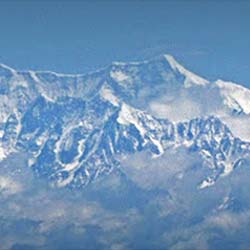
Snow View as the name suggests offers an indescribably beautiful and breath-taking picture of the glittering snows of Himalayas. It is the most easily accessible hilltop and is 2.5 Kms away from Nainital. On the top one can have a breathtaking view of Northern Himalyan ranges. There are strong binoculars from which one can see Nanda Devi (7817 m), which is second highest mountain in India. On the way from Nainital to Snow View there is a small Gadhan Kunkyop Ling Gompa of the Gelupka order.
Explore More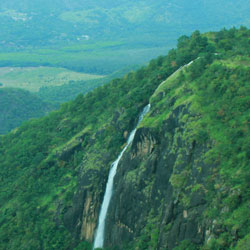
Adorned with the pristine hill stations, lush greenery everywhere, emerald backwaters, Arabian Sea, and sprawling tea estates, the unsparing beauty of Kerala can surely make you fall in love with the place. Kerala doesn’t only provide you with nature’s true beauty, but the place is also rich in its culture. Their music, dance, delectable cuisines, festivals, literature, art, Ayurvedic therapies, and many more specialties beguile globetrotter from every nook of the world. Kerala has all of it, and once you see it, even you will fall in love with it. The best time for visiting Kerala is the time between November and February. Visit Kerala, and you will fall in love with their amazing architecture, aromatic spices, exotic honeymoon destinations, long coastlines and beaches, variety of dance forms, and of course, their rich wildlife. Periyar Among the many other beautiful places, Periyar is a must-visit place of Kerala. This halting ground is surely a paradise on earth, Periyar. There is a lot to do in Periyar and even a lot more to see. There are many Periyar sightseeing tours organised which remain incomplete if you do not visit the landmarks like Periyar lake, Peiyar tiger trail, etc. Some of the places to visit in Periyar are: Chellarkovil Chellarkovil is a small village that is famous for being the best tourist place in Idukki, as it attracts many tourists from all around the globe. The mesmerizing beautiful place is almost 200 meters above the sea level and is enchanted for its cascading waterfalls, breathtakingly gorgeous view of plains, picturesque beauty, and the lush green mountains. This famous village of Chellarkovil borders the coconut groves of the Cumbum in Tamil Nadu. A fascinating feature of the Chellarkovil waterfall is that it starts to fall from Kerala and falls on the land of Tamil Nadu. There is even a watchtower at the Chellarkovil-Periyar, which has a telescope fixed on the balcony; it is called 'God’s balcony,' which offers a mind-blowing view of both the sunrise and sunset. Periyar Wildlife Sanctuary The Periyar Wildlife Sanctuary is located in Thekkady. It is a perfect example of nature’s bounty, with rich biodiversity and lazing scenic beauty. In Kerala, the Periyar Wildlife Sanctuary is one of the most protected areas for tigers and elephants. It is one of the most renowned and famous national parks in Southern India. The Periyar national park is located in the high ups of western ghat ranges. The park is adorned with a pretty lake in the heart of the sanctuary. Which is basically an artificial but 100 years old lake in the Thekkady? Famous for its dense forests of the Western Ghats and the wild elephants, there are many fully gown thick tropical evergreen forest covered with tall grown trees. Some semi-evergreen forest land is also spread with many species of animals all across the park. Therefore, these were some of the many things you will get to see in Kerala, Periyar. And Kerala must be in the bucket list of every traveller. Visit this place to experience nature’s true beauty.
Explore More
Aryankavu is a village and a hill station located amid the Western Ghats in Kollam. It is entirely an amazing place where one can succumb to nature. This place, in true words, is nature’s bounty because of the serene surroundings. Tourists on an extensive scale visit this enchanting place throughout the year. It Is Known For:-1) Aryankavu is known for its beautiful surroundings as it never fails to lure tourists2) The temple of Ayyappan is a major highlight of this hill station3) Palaruvi Waterfalls and Rose Mala also attract visitors on a large scale4) The forests of Kadmanpara are another place fit to relish the venture of trekking5) Rose Mala ecoregion is a must-visit site in Aryankavu Best Time To Visit:-Aryankavu is a celebrated hill town in Kollam. Its soul-soothing ambiance serves as the best doctor to kill the stress immediately. Since it is located amid the Western Ghats, this hill town can be visited throughout the year. Reaching There:-Kollam has a vast network of the local transit i.e. roadways, railways, and airways. To reach Aryankavu, one can hire the service of the buses that ply to the route of this enchanting hill town in Kerala. Nearest Railway Station- Aryankavu Railway StationNearest Airport- Trivandrum International Airport
Explore More
Ask anyone about Elaveezha poonchira and they will not get tired praising its beauty. Elaveezha poonchira is an arresting tourist attraction in 'God's Own Country' Kerala. This place is beckoned by the enchanting hillocks of Mankunnu, Kodayathoormala, and Thonippara. This place is frequented by the wayfarers on an extensive scale. Do not miss to pay a visit to Elaveezha poonchira during your trip to Kerala. It Is Known For:- The bewitching surroundings and exquisite hillocks that are visited by tourists. It is a trekker's paradise and one can relish this venture on the hills of Mankunnu, Kodayathoormala, and Thonippara Best Time To Visit:- Elaveezha poonchira is a destination that is thronged throughout the year. Each day, hundreds of zealous trekkers and holidaymakers visit this region to spend some time away from the noises of the city. This has become possible due to its geographical location. Reaching There:- Elaveezha poonchira is a famous landmark in Kerala. Being a frequented recreational site, the local government has made efforts and has established a proper network of the roadways so that visitors can reach here easily. By hiring the service of the local transit, one can reach the hills of Elaveezha poonchira. Nearest Railway Station - KottayamNearest Airport - Cochin International Airport
Explore More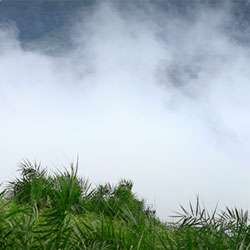
Kottathavalam is a well-known tourist spot in Kottayam (Kerala). Blest with a serene ambiance, this region is hemmed in the alluring Murugan hill. As far as your sight goes, you will see nothing else but lush green surroundings. These hillocks of Kottathavalam are the haven for nature lovers and trek aficionados. Tourists from distant places swarm to Kottathavalam and spend a good time here. It is a perfect location for the photo shoot as well. It Is Known For:- The caves that were used as a resting place for the royal family of Madurai. The bewitching surroundings of Kottathavalam hillocks. Best Time To Visit:- The best time to spend the vacation here is throughout the year except monsoons. Due to the heavy rainfall, the hillocks become muddy and you'll not like dirtying your branded footwear. Thus, chuck the monsoon and choose any season you like. During your trip, do not miss to explore the caves where the royal family of Madurai rested. These caves today hold the intricately rock-carved sculptures that catch the sight. Reaching There:- Regular services of the local transports are available to reach Kottathavalam. They charge a minimal amount for their service. Nearest Railway Station- Kottayam Railway StationNearest Airport- Trivandrum International Airport
Explore More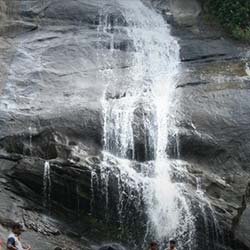
Thusharagiri is popular for its lush green forests and waterfalls. Located 11 Kms away from Kodenchery, Thusharagiri is a place which is abundant in coconut, rubber plantations, ginger, pepper and all kinds of spices. There is a dam located at Kakkayam which is at a distance of 45 Kms from Calicut. This place offers challenging rock climbing and trekking through numerous waterfalls and river path.
Explore More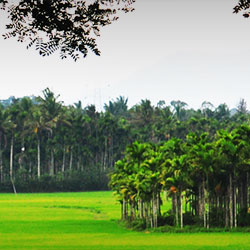
A serene ambiance, garnet green carpets of grass unfolded over acres of land, picturesque landscape with the backdrop of hillocks- don't you feel this site is ethereal? If yes, then you are an ardent traveler. This is the beauteous introduction of Sulthan Bathery, a town and tourist attraction located in Wayanad district of Kerala. This town is a frequented by the travelers on a large scale. One simply cannot describe the beauty of this town in words. It can be experienced only after paying a visit. It Is Known For:- 1. Muthanga Wildlife Sanctuary- A home to a variety of fauna like elephant, monkey, tiger etc. 2. Jain Temples- Intricately carved Jain Temples that were built in the 13th century. 3. Edakkal Caves- A well-known site on the outskirts of Wayanad. 4. Bathery Jumma Masjid- The largest mosque in town with a capacity of accommodating 1000 worshipers. Best Time To Visit:- The best time to visit Sulthan Bathery is between October-March. During this time, the weather conditions are feasible and allow people to tour the nearby areas. Also, the animals in the Muthanga Wildlife Sanctuary welcome their offspring during this time. Reaching There:- Sulthan Bathery has a well-established connection with roads and can be accessed without hassle. Frequent bus services are available for the travelers to reach Sulthan Bathery. Nearest Railway Station- KozhikodeNearest Airport- Calicut International Airport
Explore More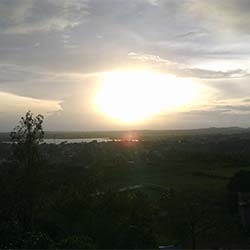
Nrupatunga Hill is a prominent tourist site in the beautiful city of Hubli. It is a hill that is visited by numerous locals and visitors on a huge scale. The site has been developed by the Dharwad Development Authority that has carved a smooth pathway with stairs. This hill is properly light up with the lamp-posts. A majority of lamp-posts are equipped with the solar panels that make it an eco-friendly destination. It Is Known For:- 1) Nrupatunga Hill is popular for its ambiance. It is blessed with tranquillity by Mother Nature 2) Initially, it was a plain and rocky hill but was developed for by Dharwad Development Authority for the welfare of people. It was carved in order to gain a smooth access 3) At present, it has a small park for children which is equipped with the swings and a restaurant that serves delicious South Indian food 4) The park is well-maintained and has a paved path where people often arrive for walking & jogging 5) Being a famous picnic site, it always remains flooded with the holidaymakers 6) From the top of Nrupatunga Hill, a panoramic view of the city of Hubli can be witnessed. Best Time To Visit:- Nrupatunga Hill is a famous tourist site in Hubli and attracts numerous visitors on a huge scale. This place welcomes the vacationers across the year. There lies no hassle in visiting this hill during any season. The entry to Nrupatunga is paid for all. One has to pay INR 10 per head (for adults) and INR 5 per head (for kids). Watch Out! Nrupatunga Hill is a picnic spot and is visited extensively. There are high chances of littering the place that is a punishable offense. Thus, visitors should abide by the rules and do not throw garbage on this hill. Reaching There:- Hubli city is well-connected with all major cities of Karnataka and can be reached by roads, railways, and flights. Visitors can hire the service of the local transit like the bus, taxi, and autos to commute within the city. Nearest Railway Station - Hubli Junction Nearest Airport - Hubli Airport
Explore More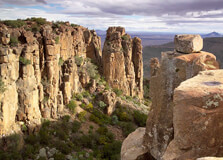
The Valley of Desolation is one of South Africa’s most breathtaking natural wonders, located in the Camdeboo National Park just outside the historic town of Graaff-Reinet in the Eastern Cape. This spectacular geological phenomenon features towering dolerite columns, some rising up to 120 meters above the valley floor, carved over millions of years by volcanic and erosional forces. The panoramic views, stark rock formations, and dramatic landscape make it a must-visit destination for nature lovers, photographers, hikers, and travelers looking for tranquility and awe-inspiring beauty. How to Reach Valley of Desolation, Eastern Cape Valley of Desolation is easily accessible from the town of Graaff-Reinet, which lies about 5 kilometers from the main viewpoint. Graaff-Reinet is located on the N9 national route and is well connected by road to other major towns and cities in the Eastern Cape and beyond. - From Port Elizabeth (Gqeberha): Approx. 260 km (3 to 4-hour drive) - From East London: Approx. 450 km (5 to 6-hour drive) - From Cape Town: Approx. 760 km (8 to 9-hour drive) If you're flying in, the nearest airports are in Port Elizabeth or East London. From there, you can rent a car and drive to Graaff-Reinet. Once in Graaff-Reinet, follow signage to Camdeboo National Park and then to the Valley of Desolation. The park roads are well-maintained, though the last stretch involves a steep climb to the viewpoint. Weather in Valley of Desolation, Eastern Cape The region experiences a semi-arid climate. Summers (October to March) are warm and sometimes hot, with temperatures ranging between 25°C and 35°C. Rainfall is sporadic and mostly occurs in the form of afternoon thunderstorms. Winters (May to August) are cooler, with daytime temperatures averaging 15°C to 22°C and night temperatures sometimes dropping below freezing. The crisp air and clear skies in winter often offer better visibility for photography and hiking. The area is generally dry and sunny year-round, making it suitable for visits in all seasons, though early mornings and late afternoons are ideal for sightseeing due to softer lighting and cooler temperatures. Timing The Valley of Desolation is open daily as part of Camdeboo National Park. The park hours are typically: Summer (October – March): 06:00 AM – 19:00 PM Winter (April – September): 07:00 AM – 18:00 PM It is best to visit during early morning or late afternoon for sunrise or sunset views. The golden light during these times enhances the colors of the rock formations and the landscape below. Why Famous for Valley of Desolation, Eastern Cape? The Valley of Desolation is famous for its towering dolerite columns, breathtaking scenery, and expansive views over the Great Karoo plains. It is a designated national monument and a key feature within Camdeboo National Park. Visitors are often left in awe at the natural beauty and geological scale of the area. The valley’s remote and stark terrain has also earned it a spiritual and almost otherworldly reputation. The vast silence and grandeur of the place have made it popular not only for sightseeing but also for reflection and meditation. Entry and Visit Details about Valley of Desolation, Eastern Cape The Valley of Desolation is located within Camdeboo National Park, managed by South African National Parks (SANParks). Entry fees are required: South African Citizens and Residents: Approx. R60 per adult International Visitors: Approx. R120 per adult Children (age-dependent): Reduced rates available Tickets can be purchased at the gate. Guided tours are not mandatory but are available through local operators for those seeking deeper geological or cultural insights. History and Geology The Valley of Desolation was formed over 100 million years ago through a combination of volcanic activity and erosion. The massive dolerite columns that characterize the valley are the remnants of ancient volcanic intrusions. Over time, the softer surrounding rock eroded, leaving behind these dramatic stone pillars. Culturally, the area was inhabited by Khoisan people and later by Dutch settlers. Today, it stands as a geological marvel and is part of Camdeboo National Park, which was proclaimed in 2005 to protect the unique environment of the region. Things to Do Visitors to the Valley of Desolation can enjoy a wide range of outdoor and cultural activities: Viewpoints: Drive up to the main viewpoint for stunning panoramic views. Hiking: Try the Crag Lizard Trail (1.5 km) for a scenic loop around the cliff tops. Photography: Ideal location for landscape and nature photography. Wildlife Watching: Look out for kudu, springbok, baboons, and over 200 species of birds. Stargazing: With minimal light pollution, the park offers excellent views of the night sky. Visit Graaff-Reinet: Explore museums, galleries, and historic architecture in the nearby town. Facts and Tips about Valley of Desolation, Eastern Cape Interesting Facts: The dolerite columns are over 120 million years old. The valley sits 1,500 meters above sea level. The name "Valley of Desolation" was given due to the barren, haunting appearance of the landscape. The surrounding Camdeboo National Park covers more than 19,000 hectares. Travel Tips: Wear sturdy walking shoes if planning to hike. Bring water, especially during summer, as it can get very hot. Don’t forget sunscreen, sunglasses, and a hat. Check for road and weather conditions in advance, especially during the rainy season. Stay until sunset for the best views and photographs. Visit nearby Graaff-Reinet for accommodations, restaurants, and historical attractions. The Valley of Desolation is a place of solitude, beauty, and awe. Its powerful natural formations, vast landscapes, and quiet atmosphere offer a unique escape into the heart of South Africa’s geological past. Whether you visit for adventure or contemplation, the Valley of Desolation is sure to leave a lasting impression.
Explore More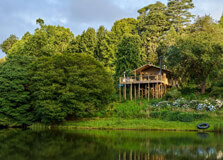
Makapansgat Valley, located near Mokopane in Limpopo province, is one of South Africa’s most historically and archaeologically significant sites. Recognized as part of the UNESCO World Heritage Site under the “Cradle of Humankind,” the valley is famous for its remarkable fossil discoveries, cultural heritage, and early human history. Visitors come to explore ancient caves, learn about early hominins, and admire the breathtaking landscape that has remained largely untouched for millennia. How to Reach Makapansgat Valley, Limpopo Makapansgat Valley lies about 15 kilometers northeast of Mokopane, formerly known as Potgietersrus, in Limpopo Province. By Road: From Johannesburg, the drive is about 3.5 to 4 hours (approximately 250 km) via the N1 highway to Mokopane. From there, a well-marked local road leads to the valley. By Public Transport: Regular buses and minibus taxis are available from major towns to Mokopane. However, a private vehicle or local taxi is needed to reach the valley itself. By Air: The closest airport is Polokwane International Airport, around 60 km away. From there, you can rent a car or arrange a shuttle to Makapansgat. Weather at Makapansgat Valley, Limpopo Limpopo experiences a warm, semi-arid climate. The weather around Makapansgat Valley is generally dry with a mix of hot summers and mild winters. Summer (October to March): Hot temperatures between 28°C and 35°C. Rainstorms are common in the afternoon. Winter (May to August): Dry and cool, with daytime temperatures around 20°C and nights as low as 5°C. The best time to visit is during winter and early spring (May to September) when the weather is pleasant for hiking and exploration. Timings Makapansgat Valley is typically open to visitors during daylight hours. Entry times may vary slightly based on guided tour schedules. Opening Hours: 8:00 AM to 4:00 PM daily (except public holidays) Best Time to Visit: Morning hours for cooler temperatures and better lighting for photography Why Famous for Makapansgat Valley, Limpopo? Makapansgat Valley is world-renowned for its archaeological and paleontological significance. The valley has yielded fossils dating back over 3 million years and includes some of the oldest evidence of human ancestors in southern Africa. It is also famous for the Makapansgat Limeworks and the “Cave of Hearths,” which has signs of early human use of fire. The site bridges prehistory and history, as it also contains records of the 1854 siege during the conflicts between the Voortrekkers and local tribes. Entry and Visit Details about Makapansgat Valley, Limpopo Entry Fee: Around R40 for adults and R20 for children and students (rates may vary) Guided Tours: Recommended and available by prior arrangement, often led by experts in archaeology or history Facilities: Visitor center, basic restrooms, shaded rest areas, and interpretive signage throughout the site Accessibility: Some areas have uneven terrain and steep paths; not all parts are wheelchair-accessible History and Architecture Makapansgat Valley is home to several historic and prehistoric sites that trace back to early hominins. The Limeworks Cave has provided Australopithecus fossils and early tools. The “Cave of Hearths” is considered one of the earliest places where hominins controlled fire, dating back nearly 1 million years. The 19th-century siege of Makapan’s Cave marks a tragic and important historical event, where Voortrekker commandos laid siege to local tribes seeking refuge in the caves, resulting in the deaths of hundreds of people. Stone ruins, burnt timbers, and historical markers reflect this dark chapter of colonial conflict. Things to Do at Makapansgat Valley, Limpopo Explore the Caves: Visit the Limeworks, Historic Cave, and Cave of Hearths to see fossil sites and ancient formations. Take a Guided Tour: Learn about the prehistoric era, fossil findings, and the siege of 1854 from professional guides. Hiking: Enjoy walking trails that wind through the valley, offering scenic views and chances to spot local flora and fauna. Photography: The dramatic cliffs, cave entrances, and untouched landscapes offer excellent photography opportunities. Educational Visits: The site is often visited by universities and researchers. Visitors can see ongoing archaeological work in some seasons. Facts about Makapansgat Valley, Limpopo The valley has been continuously occupied by humans and their ancestors for over 3 million years. The "Makapansgat Pebble," a natural stone resembling a human face, was found in the valley and is one of the earliest examples of symbolic thinking. The valley is part of the Cradle of Humankind World Heritage Site, which also includes the famous Sterkfontein Caves. The 1854 siege is one of the most significant historic confrontations in Limpopo and has been the subject of extensive academic research. The area supports diverse wildlife, including antelope, baboons, and birds, especially in the summer months. Tips about Makapansgat Valley, Limpopo Wear comfortable shoes suitable for hiking and rocky terrain. Bring water, sunscreen, and a hat, especially during summer months. Check in advance for guided tour schedules, which offer a more informative experience. Respect the natural and historical environment—do not remove fossils, stones, or damage cave walls. Combine the visit with a trip to Mokopane Biodiversity Centre or other nearby attractions in Limpopo. Mobile signal may be weak in the valley; download maps or guides beforehand.
Explore More
The Vredefort Dome, located in the Free State province of South Africa, is a geological marvel and a UNESCO World Heritage Site. It is the site of the largest and oldest verified impact crater on Earth, created over 2 billion years ago when a massive meteorite struck the planet. Today, the dome forms a part of a stunning landscape filled with hills, ridges, rivers, and rock formations that attract geologists, adventurers, and nature lovers from around the world. The Vredefort Dome offers a unique blend of scientific significance, natural beauty, and cultural heritage. How to Reach Vredefort Dome, Free State The Vredefort Dome is located near the towns of Parys and Vredefort, about 120 km southwest of Johannesburg. By Car: From Johannesburg, take the N1 south, then the R59 toward Parys. It’s a scenic drive of about 1.5 to 2 hours. From Bloemfontein, it’s approximately a 4-hour drive via the N1 and R721. By Bus: While there is no direct public transport to the dome itself, intercity buses can take you to Parys, from where local taxis or tour operators can help you explore the area. By Tour: Several eco-tourism and adventure tour operators in Johannesburg and the Free State offer guided trips to the dome, including geological tours, rafting, and hiking packages. Weather at Vredefort Dome, Free State The region experiences a temperate climate with distinct seasons: Summer (November to March): Warm with afternoon thunderstorms. Average temperatures range between 18°C and 30°C. Winter (June to August): Cool and dry. Temperatures can range between 5°C and 20°C, with colder mornings and evenings. Spring and autumn are considered the best times to visit, offering pleasant temperatures and clear skies, ideal for hiking and sightseeing. Timings The Vredefort Dome is a natural geological site spread across a vast area, accessible at all times. However, specific activities, tours, and information centres have set timings: Visitor Centres: Generally open from 9:00 AM to 4:30 PM (Tuesday to Sunday). Guided Tours: Available by appointment and usually run during daylight hours. Adventure Activities: Operated mostly between 8:00 AM to 5:00 PM, depending on the provider. Why Famous for Vredefort Dome, Free State? The Vredefort Dome is world-renowned for being the oldest and largest known impact structure on Earth. The meteorite that formed the dome is estimated to have been about 10 km in diameter, creating a crater more than 300 km wide at the time of impact. Over time, erosion has left a visible ring-like structure spanning about 90 km. It is also a place of great geological interest, with exposed rocks that provide critical evidence about the early Earth’s crust and impact processes. Scientists from around the globe study the dome to understand planetary evolution. The region is also famous for its outdoor recreational activities, cultural tours, and eco-tourism ventures. Entry and Visit Details about Vredefort Dome, Free State There is no general entrance fee to the Vredefort Dome as a whole, as it spans public and private land. However, guided tours, accommodation, and some attractions within the area may require bookings and fees. Entry Fees: Free access to most natural parts, but museums, guided tours, and private nature reserves may charge R50–R200 depending on the activity. Tour Guides: Hiring a guide is recommended for a deeper understanding of the dome’s geology and history. Facilities: Visitor centres, picnic spots, campsites, self-catering lodges, and restrooms are available in nearby towns like Parys. History and Architecture The Vredefort impact occurred around 2.02 billion years ago. The shock waves from the impact deformed the Earth's crust, creating rings of uplifted rock that are visible today. Unlike most heritage sites, the "architecture" here is purely natural—rock domes, ridges, and valleys shaped by the massive energy release from the impact event. In 2005, the site was declared a UNESCO World Heritage Site for its geological value. There are also remnants of early human settlements in the area, such as San rock art and stone walls from Tswana settlements, blending natural history with human heritage. Things to Do at Vredefort Dome, Free State Geological Tours: Learn about the impact crater, rock formations, and Earth’s history through guided field tours. Hiking & Mountain Biking: Trails wind through valleys and rocky hills, offering panoramic views and birdwatching. White Water Rafting: The Vaal River, which flows through the dome, offers thrilling rafting experiences. Camping & Picnicking: Campgrounds and picnic areas are available, especially near Parys and Vaal de Grace. Cultural Tours: Visit local communities, explore historical stone ruins, or see San rock art. Photography: The scenic beauty of the dome, combined with rare geological features, makes it a photographer’s paradise. Facts about Vredefort Dome, Free State It is the oldest known impact site on Earth, dating back over 2 billion years. The original crater may have been more than 300 km wide, though much of it has eroded over time. The dome is a key geological site, helping scientists understand crater formation and planetary history. UNESCO recognized the Vredefort Dome as a World Heritage Site in 2005. The region also has significant biodiversity and is home to various bird and plant species. Tips about Vredefort Dome, Free State Book a knowledgeable local guide to fully appreciate the scientific and historical significance. Carry plenty of water and wear hiking boots if exploring trails. Check the weather forecast and avoid river activities during or after heavy rains. Respect private land and follow local rules if entering privately owned parts of the dome. Bring a camera, especially during sunrise and sunset, for amazing geological landscapes. Nearby towns like Parys offer charming accommodation and eateries for overnight stays.
Explore More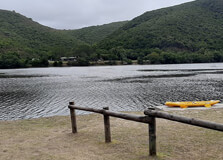
Keurbooms River Nature Reserve
The Keurbooms River Nature Reserve is a peaceful and scenic conservation area located near Plettenberg Bay along South Africa’s iconic Garden Route. Known for its pristine river, lush indigenous forests, and tranquil atmosphere, the reserve offers visitors an escape into nature where they can enjoy boat cruises, hiking, birdwatching, and water activities. It spans approximately 740 hectares and is named after the native “Keurboom” tree (Virgilia oroboides), a tree with lovely pink-purple flowers commonly found in the area. The reserve is managed by CapeNature and is recognized as a protected area of natural beauty and ecological importance. How to Reach Keurbooms River Nature Reserve, Garden Route The reserve is located about 8 kilometers east of Plettenberg Bay in the Western Cape province. By Car: From Plettenberg Bay, take the N2 highway toward Nature’s Valley and look for signage for Keurbooms River. The entrance is well-marked and has parking facilities. By Air: The nearest airport is George Airport, approximately 120 kilometers away. From there, car rental services are available to drive along the N2 eastbound to the reserve. By Public Transport: While public transport is limited, private taxis and shuttle services can be arranged from Plettenberg Bay. Weather at Keurbooms River Nature Reserve, Garden Route The Garden Route enjoys a mild maritime climate throughout the year, making Keurbooms River Nature Reserve a suitable destination in all seasons. Summer (November to March): Warm temperatures between 20°C and 30°C make it ideal for river-based activities like canoeing and swimming. Winter (June to August): Cooler temperatures (10°C to 20°C) with occasional rain, but the forest remains green and picturesque. Spring and Autumn: Mild and pleasant, with spring blossoms and autumn foliage adding beauty to the landscape. Timings and Entry Details Opening Hours: Daily from 7:00 AM to 6:00 PM. Entrance Fee: Adults – R40, Children – R20, Conservation cardholders – Free (rates subject to change). Boat Cruises: Operated from the launch site and generally run between 9:00 AM and 5:00 PM. Booking in advance is recommended during peak seasons. Why Famous for Keurbooms River Nature Reserve, Garden Route? Keurbooms River Nature Reserve is best known for its quiet, unspoiled natural environment and the beauty of the Keurbooms River itself. It attracts nature lovers, photographers, birdwatchers, and kayakers looking for a serene outdoor experience. The reserve is also famous for its ancient indigenous forest, which includes Outeniqua yellowwood trees and an abundance of bird species, such as the Knysna loerie and African fish eagle. It offers a unique opportunity to explore South Africa’s forested riverine ecosystems without large crowds. History and Natural Architecture The name “Keurbooms” originates from the Keurboom tree, once widely used by early settlers for furniture-making due to its hard wood. The area was declared a nature reserve to protect the Keurbooms River ecosystem, which is home to various species of fish, birds, and small mammals. The river is one of the few remaining clean and undisturbed rivers in the region. The reserve has a natural layout, with wooden walkways, simple boat jetties, and eco-friendly picnic spots to maintain harmony with the surrounding environment. There is minimal man-made infrastructure, which adds to its charm and focus on sustainable ecotourism. Things to Do at Keurbooms River Nature Reserve Boat Cruises: A guided boat tour takes you deep into the reserve along the Keurbooms River, with informative commentary on wildlife and plant species. Canoeing and Kayaking: Canoes and kayaks are available for rent, allowing guests to explore the tranquil river at their own pace. Swimming and Relaxation: There are several safe spots along the riverbank for swimming, sunbathing, or simply enjoying a picnic. Birdwatching: The reserve is home to over 90 bird species including the majestic African fish eagle, kingfishers, and herons. Hiking: Short forest trails offer immersive nature walks where you can observe ferns, mushrooms, and towering yellowwood trees. Fishing: Recreational fishing is allowed with a valid permit and is a peaceful activity in the early mornings or evenings. Interesting Facts about Keurbooms River Nature Reserve The river stretches for 85 kilometers and flows into the Indian Ocean near Plettenberg Bay. The reserve is a UNESCO-recognized ecological hotspot due to its biodiversity. Some of the yellowwood trees in the forest are over 600 years old. Keurbooms River is one of the cleanest freshwater rivers along the South African coast. The reserve also forms part of the Garden Route National Park buffer zone. Tips for Visiting Keurbooms River Nature Reserve Bring sunscreen, water, and a hat if visiting in summer, as the sun can be intense even near the river. Wear comfortable shoes suitable for light walking and trail exploration. Binoculars are a great idea for birdwatchers. Bring your own picnic or snacks, as there are limited food services inside the reserve. Arrive early for canoe rentals, as they are limited and first-come, first-served. Respect wildlife and avoid feeding birds or disturbing natural habitats. Keep noise levels low to enjoy the peaceful atmosphere and observe more animals. Keurbooms River Nature Reserve is a hidden treasure on the Garden Route, offering a peaceful and authentic experience of South Africa’s riverine and forest ecosystems. Whether you're paddling through calm waters, observing birds from the shore, or simply enjoying the serene surroundings, this reserve is a paradise for those who cherish nature and solitude. A visit here offers a refreshing contrast to the more commercial attractions of the region and leaves visitors with a deep appreciation of untouched wilderness.
Explore More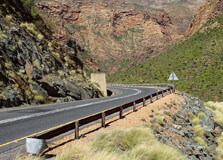
Prince Alfred Pass is one of South Africa's most scenic and historically significant mountain passes. Located in the Western Cape’s Garden Route region, this iconic route links the coastal town of Knysna to the inland town of Uniondale. Spanning about 68 kilometers, the pass winds through the Outeniqua Mountains, offering breathtaking landscapes, untouched nature, and a deep sense of history. Designed by the legendary road engineer Thomas Bain in the 1800s, this route remains a favorite for travelers seeking adventure, photography, and an escape into nature. How to Reach Prince Alfred Pass, Garden Route The Prince Alfred Pass can be accessed from either the coastal town of Knysna or the Karoo town of Uniondale. From Knysna: Drive northeast on the R339 towards Uniondale. The start of the pass is about 20 km from Knysna and is well signposted. From Uniondale: Take the R339 southward. The pass begins shortly after exiting the town and takes travelers through winding mountain paths. By Air: The nearest airport is George Airport, approximately 100 km away. From there, you can rent a car and drive to either Knysna or Uniondale to access the pass. Note: A 4x4 vehicle is not strictly necessary in dry weather, but a high-clearance vehicle is recommended due to gravel roads and occasional rough patches. Weather at Prince Alfred Pass, Garden Route The weather along Prince Alfred Pass varies with elevation and seasons, but generally reflects a temperate climate. Summer (November–March): Warm to hot with occasional rain. Daytime temperatures range from 20°C to 30°C. Winter (June–August): Cooler with chilly nights. Temperatures can range from 5°C in the morning to 20°C by midday. Mountain mists and occasional rain are common. Travelers should always check weather conditions before driving the pass, especially in winter or during heavy rains, as some sections may become slippery or impassable. Timings and Entry Details The Prince Alfred Pass is a public road and is open year-round. There are no official opening or closing times, but it is best to travel during daylight hours. Entry Fee: Free of charge Best Time to Visit: Spring (September–November) and Autumn (March–May) offer the best combination of mild weather and clear views. It is advisable to start your journey early in the day to fully experience the scenic route and stop at various viewpoints and picnic spots along the way. Why Famous for Prince Alfred Pass, Garden Route? Prince Alfred Pass is famous for being one of the most beautiful and historic mountain passes in South Africa. It is the longest pass built by Thomas Bain, a renowned road engineer, and is often considered his masterpiece. The route is famous for its natural beauty, offering views of deep forested gorges, crystal-clear streams, rugged cliffs, and remote farmsteads. Additionally, the pass holds great cultural value, as it connects two vastly different landscapes—the lush Garden Route forests and the semi-arid Little Karoo—making it both a geographical and historical bridge. History and Architecture Prince Alfred Pass was built between 1860 and 1867 by Thomas Bain and a team of convicts. It was named after Prince Alfred, the second son of Queen Victoria, who visited South Africa during that period. The road was carved using manual labor, without modern machinery, making its construction an impressive engineering feat. The pass retains much of its original charm and design, with dry-stone retaining walls, hand-cut curves, and stone culverts still visible today. The architecture is not grand in the traditional sense but stands as a testament to colonial road-building ingenuity and persistence in the face of rugged terrain. Things to Do at Prince Alfred Pass, Garden Route Scenic Drive: Enjoy a peaceful and picturesque drive with numerous stops for panoramic views and photography. Picnicking: Several roadside spots offer great picnic areas surrounded by fynbos and forest vegetation. Birdwatching: The region is rich in birdlife, including raptors, forest birds, and sunbirds. Photography: Capture stunning mountain views, historic bridges, and the unique flora and fauna. Hiking: While there are no formal hiking trails along the pass, several detour roads and footpaths invite exploration. Interesting Facts about Prince Alfred Pass It is the longest of the 24 passes built by Thomas Bain in the Cape Colony. The road still features many of Bain's original stonework and is considered an engineering marvel. The pass has remained largely unchanged since its completion over 150 years ago. Some sections are still so narrow that vehicles must slow down or stop to allow passing. The route offers an exceptional view of the unique transition between lush coastal forests and dry Karoo scrubland. Tips for Visiting Prince Alfred Pass, Garden Route Travel with a full tank of fuel, as there are no fuel stations along the pass. Carry drinking water, snacks, and basic first aid supplies. Ensure your car is in good condition; puncture repair kits are recommended. Avoid driving the pass at night due to its narrow, winding nature and limited lighting. Mobile reception may be limited in some areas, so download offline maps beforehand. Allow at least 2–3 hours to drive the pass leisurely with photo stops and short breaks. Prince Alfred Pass is more than just a road—it's a historical journey through time and terrain. It offers one of the most captivating drives in South Africa, combining natural beauty with engineering brilliance. Whether you’re a history lover, a nature enthusiast, or simply someone seeking a peaceful escape, this pass provides a memorable and enriching experience through the heart of the Garden Route.
Explore More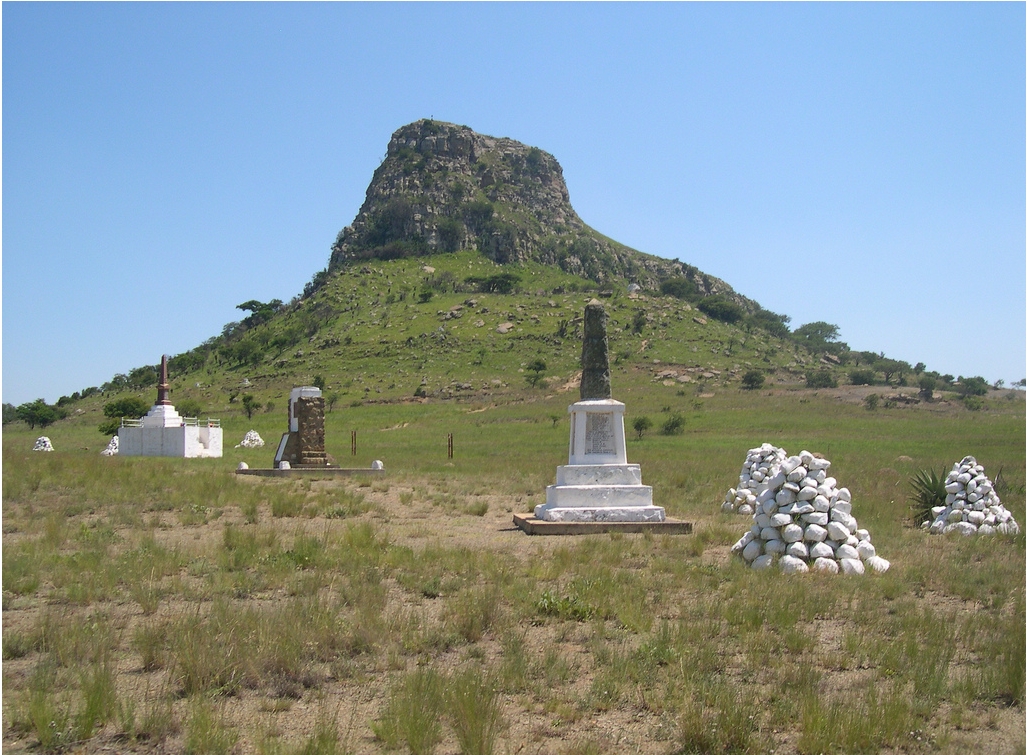
The Isandlwana Hill is situated in the province of KwaZulu-Natal in South Africa. It is the site of the famous battle which took place on January 22, 1879 between a battalion of British troops and Zulu warriors. Isandlwana Hill marks the battle where the native warriors defeated an entire battalion of the British Empire. The place is known for the memorials which mark the graves of the British soldiers who were killed on that day. Isandlwana Hill has a military significance as the underestimation of the British Empire and the superior ambush tactics of the Zulu warriors led to one of the biggest upsets in the history of warfare. It has, in time, attained significance equal to the slaying of Goliath at the hands of David. Isandlwana Hill is one of the most visited tourist sites.
Explore More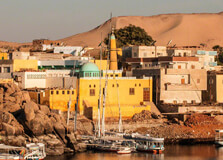
Elephantine Island is one of the most historically significant and picturesque locations in Aswan, Egypt. Situated in the Nile River, Elephantine Island is a serene and beautiful place that attracts travelers seeking a combination of natural beauty and ancient Egyptian history. The island is home to various ancient ruins and has played an important role in Egypt's history, particularly during the Pharaonic and Greco-Roman periods. A visit to Elephantine Island provides a unique opportunity to explore ancient temples, historical sites, and enjoy stunning views of the Nile River. How to Reach Elephantine Island, Aswan Elephantine Island is located just south of the Aswan city center, and reaching it is relatively easy for travelers. The most common way to get to Elephantine Island is by taking a short boat ride across the Nile from Aswan. You can find many small motorboats or feluccas (traditional sailboats) at the Nile Corniche near the city center that offer trips to the island. The boat ride is a pleasant experience, offering stunning views of the Nile and the surrounding landscape. Boats typically depart from the Aswan waterfront area, and the trip to Elephantine Island takes about 5-10 minutes. It’s best to confirm the boat’s schedule with the local boatmen or your tour guide if you’re part of an organized excursion. Additionally, many hotels in Aswan offer boat transfers to the island, so you can inquire about this option when booking your accommodation. For those traveling independently, taxis can take you to the nearest docking area, from where you can board a boat to the island. Weather in Aswan Aswan, known for its desert climate, experiences hot summers and mild winters. The summer months from May to September are very hot, with temperatures often exceeding 40°C (104°F), particularly during July and August. The best time to visit Elephantine Island and Aswan in general is between October and April, when the weather is cooler and more comfortable for sightseeing. During these months, temperatures range from 18°C (64°F) in the early mornings and evenings to 28°C (82°F) during the day. During the winter, the weather in Aswan is pleasant, and you can enjoy the boat ride across the Nile with clear skies and comfortable temperatures. If you're visiting during the summer, it's advisable to wear sunscreen, hats, and lightweight clothing to protect yourself from the harsh sun, and always stay hydrated while exploring the island. Timing of Elephantine Island Elephantine Island is typically open for visitors daily, and the best time to visit is from early morning until late afternoon. Most boats to the island run between 7:00 AM and 5:00 PM, giving visitors plenty of time to explore. However, if you prefer a quieter experience with fewer tourists, it’s best to visit the island early in the morning when the site is less crowded. The island’s main attractions, such as the ruins of the ancient temples and the museum, can be explored at your own pace, making it easy to spend a few hours or longer discovering its treasures. Why is Elephantine Island Famous? Elephantine Island is famous for its historical significance and the role it played throughout ancient Egyptian history. The island’s name is derived from the word "elephant," as it is believed that the shape of the island resembled an elephant’s trunk when viewed from a distance. Elephantine Island was a crucial strategic and religious site, particularly during the Pharaonic period. It was home to the powerful Eleventh Dynasty of Egypt and served as a military stronghold for the pharaohs due to its position along the Nile River. The island is also famous for its ancient temples, especially the Temple of Khnum, which was dedicated to the god of the Nile and creator of the world. The temple’s ruins are some of the best-preserved structures on the island and provide a fascinating glimpse into ancient Egyptian religious practices. Additionally, Elephantine Island has a rich archaeological history, with artifacts dating back to the Old Kingdom, the Middle Kingdom, and the Greco-Roman period. The island's ancient ruins, temples, and structures have made it a top destination for visitors interested in ancient Egyptian history and culture. Entry and Visit Details About Elephantine Island, Aswan Visiting Elephantine Island typically involves a boat ride from the Aswan city center, and while there is no official entry fee for the island itself, many of its attractions, such as the Elephantine Island Museum and the ancient temples, require a ticket for entry. The entry fee for the Elephantine Island Museum is around 40 EGP for Egyptian nationals and 80 EGP for foreign visitors. The museum provides valuable insights into the history of the island and displays many ancient artifacts recovered from the area. There are several attractions on Elephantine Island that make it a great place to visit. Some of the most notable places to explore include the Temple of Khnum, the remains of the Nilometer (used to measure the Nile’s water level), and the ancient Nubian village on the island. The site is also home to a number of ancient inscriptions and stone carvings that provide insight into the island's historical significance. If you’re interested in learning more about the island’s history, it’s a good idea to hire a local guide to take you around the site. Many guides are available at the dock or can be arranged through your hotel or tour operator. Guides can provide detailed explanations about the archaeological sites, the history of the island, and the importance of its monuments. The boat ride to the island is also an enjoyable experience, as it offers scenic views of the Nile River and the surrounding area, including lush palm trees, desert landscapes, and distant mountains. History and Architecture of Elephantine Island Elephantine Island has a rich and varied history that dates back to ancient Egypt. The island’s strategic location on the Nile River made it an important trading and military post, as well as a center for religious worship. In ancient times, Elephantine Island was home to the Temple of Khnum, the god of the Nile and water, who was believed to control the waters of the river and help with fertility. The temple was an important religious center for the Egyptians, and it was expanded and renovated over the centuries by several pharaohs. In addition to the Temple of Khnum, the island was also home to other significant structures, including the Nilometer, an ancient device used to measure the water level of the Nile. The Nilometer on Elephantine Island is one of the oldest and best-preserved in Egypt, providing evidence of how the ancient Egyptians tracked the flooding of the Nile, which was crucial for their agricultural practices. Archaeological digs on the island have uncovered artifacts from the Old Kingdom, Middle Kingdom, and Greco-Roman periods, further adding to its historical importance. Things to Do at Elephantine Island, Aswan There are plenty of activities to do on Elephantine Island that cater to different interests, from history enthusiasts to nature lovers. Some of the top things to do include: Explore the Temple of Khnum: Visit the ruins of the Temple of Khnum, which dates back to the New Kingdom. The site offers a glimpse into ancient Egyptian religious practices and architecture. Visit the Elephantine Island Museum: Learn more about the island’s history and archaeological finds at the museum, which showcases a variety of ancient artifacts and exhibits. Discover the Nilometer: Check out the well-preserved Nilometer on the island, which was once used to measure the Nile’s water levels and predict the annual flooding. Walk through the Nubian Village: Experience the unique culture of the Nubian people, who live on Elephantine Island. The village offers a chance to interact with locals and learn about their customs and traditions. Enjoy the scenic boat ride: Take a relaxing boat ride on the Nile to and from the island, offering stunning views of the river and surrounding landscapes. Facts and Tips About Elephantine Island, Aswan Elephantine Island is one of the most important archaeological sites in Egypt and has been continuously inhabited since ancient times. The island is home to several historical monuments, including the Temple of Khnum and the Nilometer. Visiting early in the morning or later in the afternoon will help you avoid the heat and the crowds. Don’t forget to bring sunscreen, a hat, and plenty of water, as the weather can be very hot, especially in the summer months. It’s a good idea to hire a local guide to get the most out of your visit, as they can provide in-depth knowledge about the island’s history and significance. Conclusion Elephantine Island in Aswan is a treasure trove of history, culture, and natural beauty. From the ancient Temple of Khnum to the well-preserved Nilometer, the island offers a unique opportunity to explore the rich heritage of Egypt’s past. Whether you're interested in archaeology, ancient Egyptian history, or simply looking for a relaxing boat ride on the Nile, Elephantine Island is an unmissable destination in Aswan. The combination of fascinating history and picturesque landscapes makes it a highlight for any traveler visiting Egypt.
Explore More
Chiang Rai is located about 185 kilometers (115 miles) from Chiang Mai, and the most common ways to travel between the two cities are by car, bus, or air. By Car: The drive from Chiang Mai to Chiang Rai takes around 3 to 3.5 hours, depending on traffic and road conditions. The route is scenic, passing through mountains and forests, making it a pleasant road trip for travelers who enjoy nature. Rental cars and private taxis are available in Chiang Mai, and the drive is straightforward along Highway 118. By Bus: Several bus services operate between Chiang Mai and Chiang Rai, with trips typically taking around 3.5 to 4 hours. Buses depart from the Chiang Mai Arcade Bus Station and arrive at the Chiang Rai Bus Station. This is an affordable option for budget travelers and offers a chance to enjoy the scenic views along the way. By Air: While Chiang Rai has its own international airport (Chiang Rai International Airport), direct flights from Chiang Mai to Chiang Rai are limited. However, flights between Chiang Mai and Chiang Rai typically take around 1 hour, offering a quick and convenient way to travel between the two cities. Thai AirAsia is one of the airlines that operate these routes. Weather in Chiang Rai Chiang Rai has a tropical climate, with three distinct seasons: the cool season, the hot season, and the rainy season. The cool season, from November to February, is the best time to visit, with temperatures ranging between 15°C (59°F) and 28°C (82°F). This period offers pleasant weather, making it ideal for exploring the city and its surroundings. During this time, Chiang Rai’s skies are clear, and the weather is perfect for outdoor activities. The hot season lasts from March to May, with temperatures reaching as high as 35°C (95°F). While it can be uncomfortable for outdoor activities, the hot season is still a popular time for travelers to visit Chiang Rai, especially those who prefer the vibrant and sunny atmosphere. The rainy season, from June to October, brings heavy showers, with the peak rainfall occurring in August and September. The rain can create lush, green landscapes but may cause some outdoor activities to be less enjoyable. Timing of Chiang Rai When planning a visit to Chiang Rai, it’s important to consider the time of day to make the most of your trip. The best time to explore the city’s famous landmarks, such as the White Temple (Wat Rong Khun) and the Blue Temple (Wat Rong Suea Ten), is in the early morning or late afternoon. During these times, the weather is cooler, and the sites are less crowded. For those looking to explore the local markets or experience the nightlife, evening hours are ideal. Chiang Rai has a variety of night markets, such as the Chiang Rai Night Bazaar, where visitors can sample local food, shop for souvenirs, and enjoy performances from local artists. Why Famous for Chiang Rai? Chiang Rai is famous for its stunning temples, particularly the White Temple (Wat Rong Khun) and the Blue Temple (Wat Rong Suea Ten). These temples have gained international recognition for their unique and striking architectural styles, which blend traditional Thai art with modern elements. Chiang Rai is also famous for its proximity to the Golden Triangle, where Thailand, Laos, and Myanmar meet, making it an important historical and cultural location. The city is home to vibrant ethnic communities, including the Akha, Lahu, and Karen hill tribes, who offer visitors a glimpse into their traditional lifestyles. Chiang Rai’s natural beauty, with its mountains, rivers, and jungles, also adds to its appeal as a travel destination. Entry and Visit Details About Chiang Rai Entry to Chiang Rai is free for tourists, and visitors are not required to pay an entry fee to explore most of the city’s attractions. However, some of the temples, such as Wat Rong Khun and Wat Phra Kaew, may have small entry fees for maintenance purposes. The fee for Wat Rong Khun is typically around 50 THB (1.5 USD), while other temples may charge a small donation instead. When visiting Chiang Rai, it’s recommended to allocate at least 2-3 days to explore the city and its surrounding areas. A guided tour can enhance your experience, especially if you are interested in learning about the cultural and historical significance of the sites. Most of the key attractions in the city are easily accessible by taxi or tuk-tuk, making it simple to get around. History and Architecture of Chiang Rai Chiang Rai has a rich history that dates back to the late 13th century when it was founded by King Mangrai as the capital of the Lanna Kingdom. The city flourished as a trading hub due to its strategic location near the Golden Triangle. Over the centuries, Chiang Rai has seen numerous influences, from Burmese and Lao cultures to Thai traditions, which are reflected in its architecture and art. Chiang Rai is known for its unique and modern architectural style, particularly in its temples. The White Temple (Wat Rong Khun), designed by Thai artist Chalermchai Kositpipat, is a contemporary masterpiece that combines traditional Buddhist architecture with modern, almost surreal artistic elements. The temple is entirely white, symbolizing the purity of the Buddha, and features intricate carvings and sculptures that depict various mythological themes. Another architectural gem is the Blue Temple (Wat Rong Suea Ten), known for its striking blue color and beautiful murals depicting Buddhist teachings. The temple’s design is a blend of traditional Thai and modern influences, creating a visually stunning structure that stands out in the city. Things to Do in Chiang Rai There is no shortage of activities and things to do in Chiang Rai, from cultural experiences to outdoor adventures. Some of the most popular activities include: Visit the White Temple (Wat Rong Khun): This iconic temple is one of the most visited attractions in Chiang Rai, known for its intricate design and unique symbolism. It’s a must-see for anyone visiting the city. Explore the Blue Temple (Wat Rong Suea Ten): Another architectural wonder, the Blue Temple is known for its striking blue color and beautifully detailed murals. It offers a peaceful atmosphere for reflection. Tour the Golden Triangle: A visit to the Golden Triangle, where Thailand, Laos, and Myanmar meet, is a must. You can take a boat ride on the Mekong River and learn about the region’s history as a former opium-producing area. Visit the Black House (Baan Dam): The Black House is a collection of over 40 buildings designed by Thai artist Thawan Duchanee. The structures feature dark and eerie architecture, with exhibits showcasing a mix of art, sculptures, and animal remains. Explore Hill Tribe Villages: Chiang Rai is home to several indigenous hill tribes, including the Akha, Lahu, and Karen. You can visit these villages to learn about their unique cultures and traditions. Facts and Tips About Chiang Rai Chiang Rai is less crowded than Chiang Mai, offering a more relaxed atmosphere for travelers who prefer to avoid large crowds. The city is known for its unique blend of traditional Thai culture and modern art, making it an interesting destination for art lovers. When visiting temples, be sure to dress modestly. Visitors are expected to cover their shoulders and knees as a sign of respect for the sacred sites. Chiang Rai’s night markets are a great place to sample local food, buy handmade crafts, and experience the local culture. Keep in mind that Chiang Rai is located at a higher altitude than other Thai cities, so temperatures can be cooler, especially in the evenings and mornings.
Explore More
Uetliberg is one of Zurich's most popular natural attractions, offering spectacular panoramic views, hiking trails, and an escape from the city bustle. Rising 870 meters above sea level, it is the highest peak in the Zurich city region and provides a stunning view of Zurich, the surrounding mountains, and Lake Zurich. Whether you're looking for a place to relax in nature, go for a hike, or enjoy a breathtaking sunset, Uetliberg has something for everyone. This guide will provide detailed information on how to visit, the weather, history, things to do, and more at Uetliberg. How to Reach Uetliberg, Zurich Uetliberg is located just a short distance from downtown Zurich, making it very accessible for both tourists and locals. Whether you're traveling by public transport or car, getting to Uetliberg is easy: By Train: The most convenient way to reach Uetliberg is by taking the Uetliberg railway (S10) from Zurich main station (HB). The train ride takes about 20 minutes, and the journey offers fantastic views of the city and countryside. Once you reach the summit station, it's just a short walk to the top. By Car: If you prefer to drive, you can access Uetliberg via the Uetlibergstraße. There are parking facilities near the top, but it’s recommended to use public transport due to limited parking availability. By Bike: For the more adventurous, biking up to Uetliberg is an option. The mountain offers various cycling routes that will give you an invigorating workout with the reward of beautiful views. By Foot: If you’re up for a challenge, hiking to the top of Uetliberg is a rewarding experience. There are several hiking trails from Zurich that lead up to the summit, which usually take around 1.5 to 2 hours depending on the route. Weather at Uetliberg, Zurich The weather at Uetliberg can vary depending on the season, so it’s essential to check the forecast before your visit. Here’s a breakdown of the general weather patterns throughout the year: Spring (March to May): Spring brings mild temperatures ranging from 5°C to 15°C. The landscape begins to bloom, making it an excellent time to hike or enjoy the views. There’s still a chance of rain, so be prepared with appropriate clothing. Summer (June to August): Summer is warm, with temperatures between 18°C to 25°C. This is the most popular time to visit Uetliberg, as the weather is perfect for outdoor activities like hiking, biking, and picnicking. Autumn (September to November): Fall offers cooler temperatures, usually between 10°C and 18°C. The changing foliage adds a beautiful dimension to your visit, and the fewer crowds mean a more peaceful experience. Winter (December to February): Winter temperatures can drop below 0°C, and snow is common. If you visit during this time, you can enjoy a winter wonderland setting with snow-covered trees and crisp air. Be sure to dress warmly if you're planning on hiking or spending time outdoors. Timing of the Visit to Uetliberg, Zurich Uetliberg is open year-round, with no specific entry hours, as it is a public natural area. However, if you're planning to visit the peak via public transport, the Uetliberg trains operate daily from early morning to late evening, with trains running every 30 minutes. The best time to visit depends on what you want to experience: Morning: Early mornings offer a tranquil atmosphere with fewer tourists. It’s an excellent time for photography or a quiet walk along the trails. Afternoon: The midday and afternoon hours are popular for hiking, biking, or enjoying a meal at the mountaintop restaurant. During this time, the panoramic views of Zurich and the surrounding areas are at their best. Sunset: For a magical experience, visit Uetliberg during sunset. The sight of the city and mountains bathed in golden hues is unforgettable. Why is Uetliberg Famous? Uetliberg is famous for several reasons, making it a must-visit destination for nature lovers and visitors to Zurich: Panoramic Views: One of Uetliberg's most significant attractions is its stunning 360-degree view of Zurich, the Swiss Alps, and Lake Zurich. On clear days, you can see as far as the snow-capped peaks of the Alps. Hiking and Biking Trails: Uetliberg offers a variety of hiking and biking trails that cater to all levels of experience. These trails wind through forests, meadows, and scenic landscapes, making it a popular spot for outdoor activities. The Uetliberg Lookout Tower: The lookout tower at the top of Uetliberg provides panoramic views of Zurich and the surrounding areas. It is one of the most photographed spots on the mountain and offers an exceptional vantage point. The Felsenegg Cable Car: For those looking to extend their journey, the Felsenegg cable car provides a scenic ride down to Lake Zurich, offering stunning views of the city and mountains along the way. Entry and Visit Details about Uetliberg, Zurich Accessing Uetliberg is free of charge, making it an excellent destination for visitors of all budgets. There is no entry fee to explore the mountain, hike the trails, or enjoy the views. However, if you wish to visit the lookout tower, there is a small fee of CHF 2 for adults and CHF 1 for children. Additionally, if you're looking to dine at the mountaintop restaurant, you’ll need to budget for food and drinks. The restaurant offers a variety of local Swiss dishes and is an ideal spot for a meal with a view. History of Uetliberg The history of Uetliberg dates back thousands of years, with evidence of human settlement in the area from ancient times. The mountain itself is named after the Uetliberg family, who were early settlers in the region. Over the centuries, the area has been used for agriculture, forestry, and as a popular destination for locals to escape the city’s hustle and bustle. In the 19th century, Uetliberg began to gain popularity as a tourist destination. The construction of the Uetliberg railway in the 1870s made it easier for people to visit the peak, and the mountain soon became a favorite spot for hiking and leisure. Today, Uetliberg remains a beloved natural landmark, offering both locals and visitors a peaceful retreat with spectacular views. Architecture of Uetliberg While Uetliberg is primarily known for its natural beauty, it also has a few notable architectural features. The Uetliberg Lookout Tower, built in 1991, is a steel structure that stands 68 meters tall and offers sweeping views of Zurich and the surrounding areas. The tower has become a symbol of the mountain and is a popular spot for tourists and photographers alike. In addition to the lookout tower, the Uetliberg mountain is home to several other structures, including the mountaintop restaurant, which offers an inviting and rustic Swiss dining experience, and various hiking trail markers and shelters scattered throughout the mountain. Things to Do at Uetliberg Uetliberg offers a variety of activities, making it an ideal destination for outdoor enthusiasts: Hiking: There are several well-marked hiking trails on Uetliberg, ranging from easy walks to more challenging hikes. The Felsenegg trail, which connects Uetliberg to the Felsenegg cable car station, offers breathtaking views of Lake Zurich. Biking: For cyclists, there are a number of biking routes that offer a thrilling ride through scenic landscapes and wooded areas. Panoramic Views: Don’t miss the opportunity to climb the lookout tower for one of the best panoramic views of Zurich and the Alps. Photography: Uetliberg is a photographer’s paradise, offering countless opportunities to capture stunning landscapes, wildlife, and city views. Dining: Visit the mountaintop restaurant for a traditional Swiss meal with an unbeatable view of Zurich and the surrounding mountains. Interesting Facts about Uetliberg Uetliberg is the highest mountain in Zurich, standing at 870 meters above sea level. The lookout tower on Uetliberg offers a 360-degree view that includes Lake Zurich, the city of Zurich, and the Swiss Alps in the distance. The Uetliberg mountain range is part of the larger Zurichberg massif and is a popular spot for hiking, biking, and paragliding. During the winter months, Uetliberg offers opportunities for snowshoeing and tobogganing, adding another layer of fun to the mountain experience. Tips for Visiting Uetliberg Dress in Layers: The weather at the top of Uetliberg can be cooler than in Zurich city, so it’s advisable to dress in layers, especially if you're hiking or biking. Bring a Camera: With so many scenic viewpoints, don't forget to bring a camera to capture the stunning vistas. Plan for Weather: Uetliberg can be foggy or rainy at times, so check the weather forecast before heading up to ensure clear skies. Stay Hydrated: Bring water with you, especially if you’re hiking or biking on the trails, as the mountain can be physically demanding. Conclusion Uetliberg is one of Zurich’s most beloved natural attractions, offering stunning views, outdoor activities, and a peaceful retreat from the city. Whether you’re hiking up to the peak, taking in the panoramic vistas, or simply enjoying a meal at the mountaintop restaurant, Uetliberg offers something for everyone. It’s a must-visit spot for anyone traveling to Zurich, offering a perfect blend of nature, adventure, and relaxation.
Explore More
Echo Point is a scenic location that rests in the middle of the picturesque mountains of Munnar. This point lies in the conflux of Mudrapuzha, Nallathanni, and Kundala ranges and is known for its echoing phenomenon. This location is not only for the echo, but it is a famous place where one can succumb to nature. Echo Point is a must-visit destination while enjoying a vacation in Kerala. It Is Known For:-1) The enticing beauty that defines this place as a must-see attraction2) It also houses a variety of the tea gardens, coffee plantations, and spice gardens etc.3) Visitors relish the nature walks that are organized on the slopes of Mudrapuzha, Nallathanni, and Kundala ranges4) A residence for the rare birds that are spotted only in this region5) Nature photography6) Neelakurinji flower, a flower that blooms only in Munnar Best Time To Visit:-Echo Point in Munnar welcomes its visitors throughout the year. You can plan a vacation here in any season. Since it is located at a higher altitude, the average temperatures scale between 10°C-20°C that makes it appropriate to enjoy the different activities. Reaching There:-Echo Point is a major attraction and is swarmed by a large number of tourists. To reach this location, tourists hire the pocket-friendly service of the local cabs. Nearest Railway Station- Chaganacherry Railway StationNearest Airport- Cochin International Airport
Explore More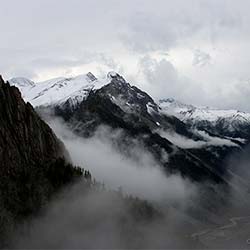
Zoji-La Pass is a major tourists’ destination in Jammu & Kashmir. It rests in the belt of the mighty Himalayas and is a high mountain pass. It has a mammoth height of 11, 575 feet above the sea level and serves as a link between the valley of Kashmir and Ladakh. This mountainous pass remains under the blanket of snow throughout the year and has an historical importance. In the bygone times, it was captured during the ‘First War for Kashmir’ in the year 1947. The following year in November, the Indian Military forces were successful in re-capturing it from the Pakistani army.It Is Known For:-1) Zoji-La Pass is India’s one of the highest roads.2) This place is historically important because it was the place captured by Pakistan during the Indo-Pak war of 1947 that was fought for Kashmir. In the year 1948, the Indian Military deployed the tanks and was successful in recapturing it own area.3) This place is bestowed with the Himalayan beauty in profusion and offers a great view of the mighty snow-clad peaks of the Himalayas.4) During winters, Zoji-La Pass remains closed due to excessive snowfall and Borders & Roads Organization (BRO) clears it. It is the period when this pass becomes completely inaccessible.5) During the other seasons, this pass offers a great view of the nearby valleys of Dras.Best Time To Visit:-Zoji-La Pass is the place that can be visited during any season except winters. During winters, the heavy blanket of the shimmering snow makes it impossible to reach this site. Therefore, the period between May-October/November is considered as appropriate for embarking a casual voyage to Zoji-La Pass.Watch Out!Due to its high elevation, the temperature of Zoji-La Pass remains cold for a major portion of the year. Thus, it is recommended that visitors should carry woolens along with them in order to stay warm.Reaching There:-Ganderbal is the nearest district to Zoji-La Pass. It is well-connected via all major roads, railheads, and airways to the whole Kashmir. Tourists can reach Ganderbal from anywhere in Kashmir. Commuting within the district is usually done via local buses, taxis, and autos. To reach Zoji-La Pass, one can hire a private vehicle or relish the journey on a bike for an adrenaline-boosting ride.Nearest Railway Station:- Srinagar Railway StationNearest Airport:- Srinagar Airport
Explore More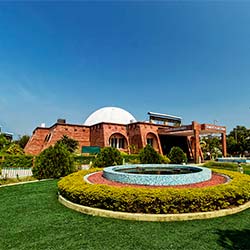
Guwahati Planetarium is a famous tourist destination in Guwahati. It is an astronomical institute and planetarium that serves as a huge crowd puller in the city. It is the best place in the city for the space enthusiasts that love exploring the celestial bodies. Tourists and students visit this place on a huge scale to enhance their knowledge about the solar system and the entire universe.It Is Known For:- Guwahati Planetarium is an amazing astronomical research center- It is installed with the instruments like telescopes and projectors manufactured by GoTo, a Japan-based company. These instruments provide an ease for projecting movies and observing the celestial bodies- The huge dome of the planetarium serves as the screen for projecting the movies- The seminars and exhibitions are also organized by the planetarium authorities for the astronomy fraternity and locals- Special arrangements are made for the visitors that visit to witness a celestial event like an eclipse or a meteor shower closely- It has a library where you can find a vast collection of books based on astronomyBest Time To VisitGuwahati Planetarium never leaves a chance to attract and impress visitors. People, especially students, are seen here every day as movies are projected on a daily basis. Apart from this, the best time for visiting Guwahati Planetarium is during an eclipse. The management makes apt arrangements to witness such wonderful events.Watch Out!Guwahati Planetarium has certain rules that should be followed. No one is permitted to touch any model of the solar system and other planets. The cell phones should be on the silent/vibration mode, especially during seminars.Nearest Railway Station - Guwahati Railway StationNearest Airport - Guwahati International Airport
Explore More
Nestled in Himachal Pradesh's Banjar Valley, Jibhi is a hidden Himalayan gem. Lush pine forests, gushing rivers, and traditional wooden houses dot the landscape. A haven for nature lovers, offering trekking, camping, and serene mountain views. Experience rural Himachali life in this tranquil retreat away from tourist crowds.
Explore More
Maibong is a picturesque town in the Indian state of Assam. It lies in a hilly region of the state and has beautiful green hillocks everywhere. The mighty Himalayas overlook this town which is a home to the mesmerizing waterfalls, landscapes, and historical relics. In the previous times, Maibong was the capital of the Kachri dynasty. Apart from the Kachri dynasty, Maibong was also ruled by the Dimacha dynasty during the medieval era. It Is Known For:- 1) Maibong town served as a capital for 2 dynasties in different eras. It was ruled by Kachris and Dimachas 2) This town is blessed with the beauty of nature in abundance. There are so many green hills around it that are overlooked by the misty Himalayas 3) The famous shrine of Ramchandi stands in Maibong. Many pilgrims visit the temple on a huge scale 4) Maibong is known for its natural beauty and serves as a perfect recreational site 5) You can experience the thrill of trekking, hill climbing, and camping at Maibong Best Time To Visit:- Maibong invites the tourists and visitors on a huge scale. People often visit this place, especially on weekends. The trekkers and campers also flock to Maibong for experiencing the thrill. The best time for enjoying at Maibong is between September-December. Watch Out! Maibong is a beautiful place and extremely tidy. No one dumps any garbage or leaves behind the leftovers. Thus, you should abide by the rules and do not litter the terrains of Maibong. Reaching There:- Tourists can visit Maibong via roadways, railways, and airways. There are many state-run buses, broad gauge trains, and flights that are available from all over Assam. You can travel within Maibong via local transit and bullock cart. Nearest Railway Station - Lamding Railway Station Nearest Airport - Guwahati airport
Explore More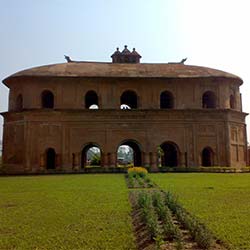
Charaideo needs no special introduction. It is a remarkable and must-see travel destination in Assam. It has a great historical significance that makes it an interesting destination. It served as the first ever capital of the Ahom dynasty. The first Ahom King, Chao Lung, laid the foundation of this city in the early 12th century. Many tourists from different parts of Assam visit this place. Why Is It Famous? Charaideo is famous because of its historical significance. It was the first capital of the Ahoms. As the empire expanded, the kings shifted their capitals but Charaideo remained an iconic center. It is a beautiful place with a serene ambiance and lush green vegetation. The tombs and cenotaphs of all the Ahom royal families are located here. It also includes the temples of the Ahom Gods. There are many graves in Charaideo but only 30 are protected by the ASI. The unprotected ones are damaged and are undergoing restoration. Best Time To Visit: Charaideo attracts the visitors on a huge scale. Every day, many tourists and locals visit this place alike. Not only as a travel destination but people visit this place as a recreational spot. The serene ambiance of Charaideo is enough to provide some mental calmness. Watch Out! Littering is a punishable offense at Charaideo. This place is listed among the heritage sites in Assam and no one is allowed to create a mess in any manner. So, use the waste-bins for dumping the trash. Reaching There: Sivasagar is the nearest city to Charaideo. People can reach here via state-run buses, broad gauge trains, and flights due to its wider connectivity in Assam. One can travel within Sivasagar via local transit. Nearest Railway Station - Sivasagar Town Railway Station Nearest Airport - Jorhat Airport
Explore More